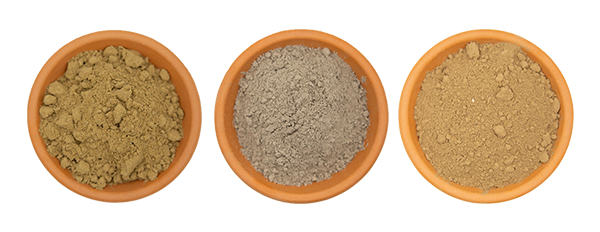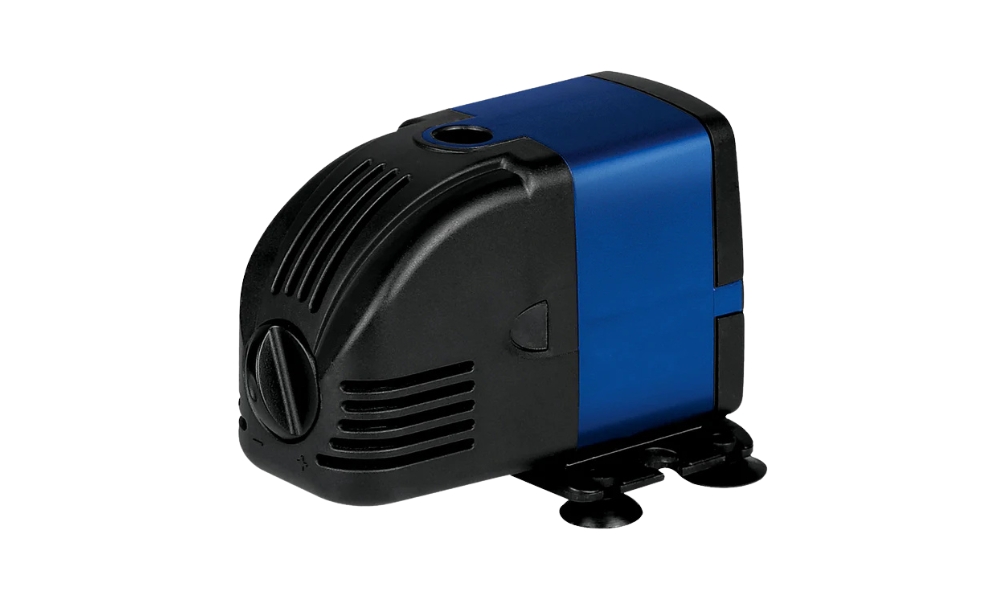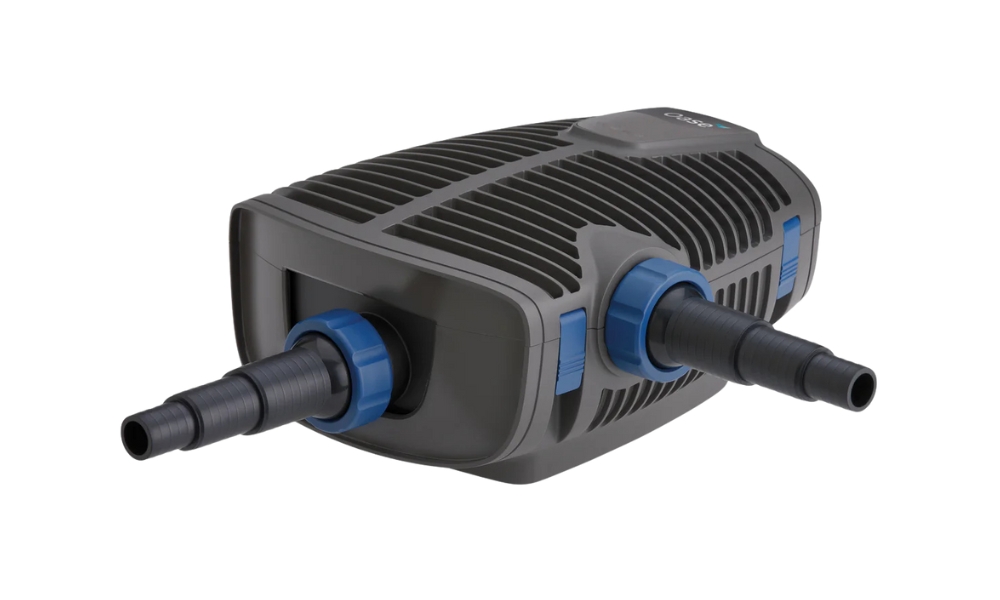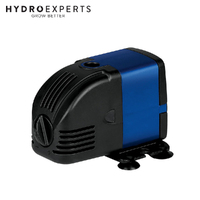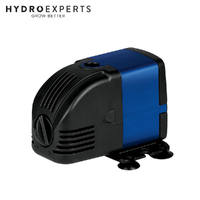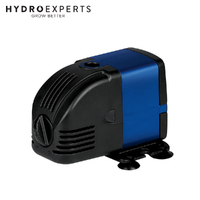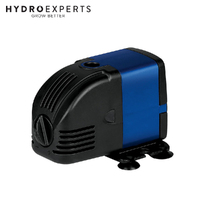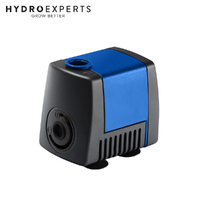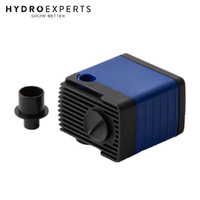How to Choose the Right Water Pump for Your Pond or Garden
By Hydro Experts | 14 May 2025
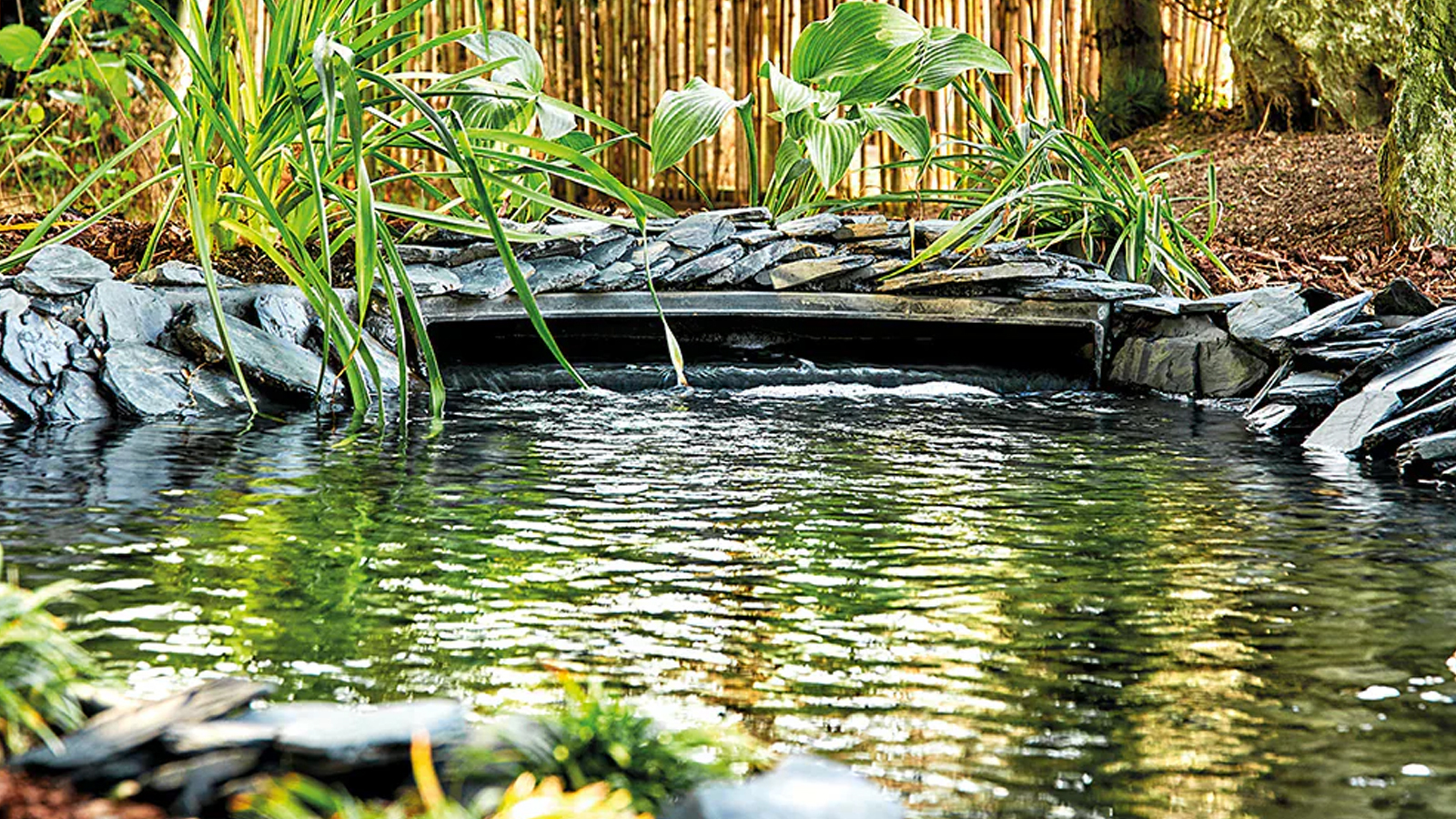
Water pumps are indispensable household items for gardens, ponds, and water features. They do all the heavy lifting and keep the water flowing, the fish swimming and our outdoor living areas looking great day after day. However, with so many brands and models currently overwhelming the Australian market, selecting the right pump for your use is a lot like finding a needle in a haystack.
Whether you're establishing a new pond in your backyard or replacing an old water feature, you will hopefully find some valuable insights in this guide to ensure you make the right choice and select pumps that will work for your needs without breaking the budget.
Why Your Pump Choice Matters
We've come across plenty of pond owners experiencing grazed pumps that fail quickly due to wear and tear from being undersized or oversized pumps that are a waste of energy (and expense). The proper pump not only moves water but also develops the ideal conditions for your aquatic ecosystem while not taxing your power bill.
In our Australian environment, where there are temperature extremes (both hot and cold) and water is often a precious commodity, it is not just about what looks good; selecting a proper pump is about sustainability and efficiency.
Determining the Right Size Pump
Flow Rate: The Heart of Pump Sizing
The most crucial consideration is flow rate- measured in litres per hour (LPH) or the amount of water that can be moved by the pump in an hour.
To determine flow rate:
When it comes to pond applications, the general rule of thumb is to turn over the volume of the pond in one to two hours. A 5,000-litre pond would require a pump with a flow rate of at least 2,500-5,000 LPH.
For waterfall applications, you can estimate 150-250 LPH for each centimetre in width of the waterfall feature. For example, a waterfall that is approximately 30cm wide will require a flow rate of approximately 4,500-7,500 LPH.
For fountains: Consider the desired height and spread of your fountain. Higher or wider spray patterns require more powerful pumps.
Head Height: The Hidden Challenge
One mistake that we often see is ignoring head height (i.e., the vertical distance from the pump to the highest point of water discharge). For every metre of head height, there is a pressure and flow capacity loss in your pump.
Let's say you have a waterfall, 1.5 metres in height above your pump as an example. If your pump's maximum head height is only 2 metres, you are going to have significantly reduced flow compared to the top of your waterfall. Generally, I recommend selecting a pump that exceeds what you need in head height by at least 30%.
Toward the end of the season in Australia, and the common sloping gardens and multi-level water features we have, head height is a particularly important consideration in our landscape designs.
Pipe Diameter: Don't Bottleneck Your Flow
Even the most powerful pump can be hamstrung by restrictive plumbing. When selecting pipes and fittings:
- For pumps up to 3,500 LPH: 19-25mm pipe diameter
- For pumps 3,500-7,000 LPH: 25-32mm pipe diameter
- For pumps over 7,000 LPH: 40-50mm pipe diameter
Using too small a pipe creates back pressure that forces your pump to work harder, shortening its lifespan and increasing energy usage, something we're all trying to avoid with rising energy costs in Australia.
Understanding Motor Types
The heart of any water pump is its motor. The type of motor significantly impacts performance, efficiency, and running costs. Let's dive into the main types available in the Australian market:
Standard AC Motors
Traditionally, most pond pumps used standard AC (Alternating Current) motors. These are relatively inexpensive to purchase but can be costly to run.
Pros:
- Lower initial purchase price
- Proven technology with good reliability
- Readily available replacement parts
Cons:
- Higher energy consumption
- Fixed speed operation
- Can generate heat that reduces efficiency
In the Australian context, with our high electricity prices (among the highest in the developed world), the running costs of standard AC motors can add up quickly.
EC Motors (Electronically Commutated)
EC motors, like those in the Oase AquaMax Eco Premium & Pondmax EV series, represent a significant advancement in pump technology. These motors use direct current with electronic commutation for superior efficiency.
Pros:
- Up to 65% more energy-efficient than standard AC motors
- Variable speed capability
- Run cooler, extending motor life
- Quieter operation
Cons:
- Higher initial purchase price
- More complex electronics mean more sophisticated repair requirements
The Pondmax EV series has gained significant popularity in Australia based largely on its energy-efficient credentials. As electricity prices continue to rise across Australia, these pumps often pay themselves back through energy savings in a time frame of 12-24 months, depending on usage.
Another feature of the EV series is the built-in controllers, which allows the user to adjust the flow rate as required, making it perfect to set and forget with seasonal adjustments as we transition from extreme summer weather to mild winter temperatures.
Solar-Powered Pumps
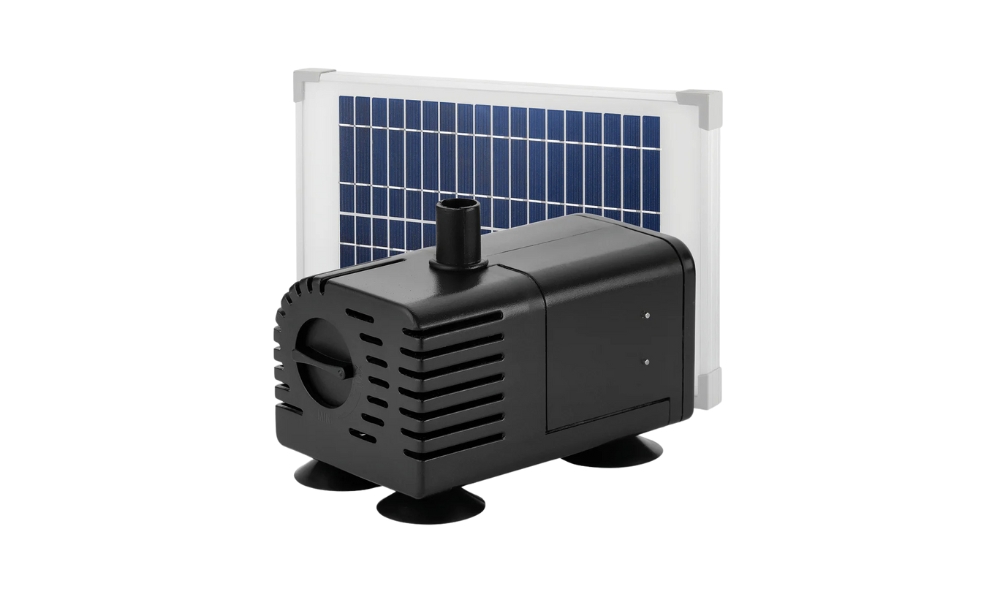
With Australia blessed with abundant sunshine (especially in Queensland and the Northern Territory), solar-powered pumps offer an increasingly viable option.
Pros:
- Zero operating electricity costs
- Environmentally friendly
- Ideal for remote locations without power access
- No electrical safety concerns around water
Cons:
- Dependent on weather conditions
- Often lower flow rates than mains-powered alternatives
- Requires battery storage for consistent night operation
- Higher initial investment if batteries are included
Many Australian pond owners use solar pumps for smaller water features or as backup systems. They're particularly popular for bird baths and small decorative fountains.
Magnetic Drive (Mag Drive) Pumps
These pumps use magnetic coupling instead of a direct shaft connection between the motor and impeller.
Pros:
- No seal to leak or wear out
- Energy efficient
- Safe for fish as there's no oil that could leak
- Very quiet operation
Cons:
- Generally limited to lower flow rates
- Less effective at higher head heights
- Can struggle with suspended solids
Mag drive pumps are quite popular for smaller Australian water gardens and indoor water features where noise levels are a concern.
Australian Market Considerations
Energy Efficiency Ratings
Australia has some of the highest electricity prices in the world, so energy efficiency is often at the top of the list of priorities! When looking for pumps make sure you look for pumps that are rated as high efficiency and also check the energy consumption in watts too, The Energy Rating Label system does not cover pond pumps at present, but most manufacturers will provide some efficiency statistics.
To give you an idea of costs, running a 100w pump 24 hours a day, 7 days a week will add around $300-$400 to your electricity bill at current average rates in Australia. Using an alternative EC motor instead may only use approximately 35-40W for the same flow and potentially save you over $200 per year.
Water Restrictions and Conservation
Much of Australia has water restrictions, particularly in times of drought. Some pumps that have adjustable flow rates give the ability to limit water movement (and evaporation) during hot or water-restricted times whilst keeping circulation for fish health.
Some modern pumps are designed with internal sensors that can determine when water is not present and will automatically shut down if they run dry. This helps save wear on the pumps and save water, which can be an issue in the extremes of our climate.
Weather Resistance
Our harsh UV radiation, extreme temperature fluctuations, and occasional flooding events can take their toll on outdoor equipment. Australian-designed pumps or those specifically marketed for our conditions typically feature:
- UV-resistant housing materials
- Wide operating temperature ranges
- Enhanced waterproofing for flood situations
- Salt-resistant components for coastal areas
Wildlife Considerations
If your pond has fish or attracts native wildlife, you'll want a pump that's safe for these creatures. Look for:
- Pre-filter cages with appropriate spacing
- Impeller designs that won't harm small fish
- Oil-free operation where possible
Making Your Final Decision
When you're standing in the shop or browsing online, here's a practical checklist to help you make your final selection:
- Calculate your required flow rate based on pond size or water feature dimensions
- Measure your actual head height and add 30% for a safety margin
- Consider your budget for both purchase AND running costs
- Check the warranty period (typically 2-3 years for quality pumps in Australia)
- Research parts availability – can you easily get replacements if needed?
- Read Australian reviews from people in similar climate zones to yours
A Real-World Example
Let's say you have a 6,000-litre pond with a small waterfall that's 1.2 metres above the pump location. You'd need:
- Flow rate: 3,000-6,000 LPH (circulating once every 1-2 hours)
- Head height capacity: At least 1.6 metres (1.2m plus 30% margin)
- Pipe diameter: Minimum 25mm recommended
For this situation, something like the Pondmax EV-6500 would be appropriate. With its EC motor technology, it delivers up to 6,500 LPH while consuming just 45 watts at maximum flow, compared to 85-100 watts for a traditional pump with similar output. Over a year of continuous operation, that difference could save you around $150-180 in electricity costs.
Maintenance Tips for Longevity
Once you've selected your perfect pump, keep it running smoothly with these maintenance tips:
- Clean pre-filters monthly (more often during autumn leaf fall)
- Remove and clean the impeller chamber quarterly
- Check for cable damage or wear during cleaning
- Run pumps continuously if possible (stopping and starting causes more wear than constant operation)
- Consider removing and storing pumps indoors during extreme weather events
Final Thoughts
Choosing the right water pump doesn't need to be overwhelming. By understanding your specific requirements and the different technologies available, you can make an informed decision that will keep your water feature running beautifully for years to come.
The Australian market offers plenty of quality options, from traditional workhorses to cutting-edge EC motor designs like the Pondmax EV series. While the energy-efficient options might have a higher upfront cost, they quickly pay for themselves through reduced power consumption, especially important with our high electricity prices.
Remember that investing in quality upfront typically leads to better reliability, lower running costs, and less frustration down the track. Your perfect pump is out there—now you know exactly how to find it.
Multiply your pond’s volume by 0.5–1.0 to get the required flow rate (LPH). Example: A 6,000L pond needs 3,000–6,000 LPH.
Head height is the vertical distance the pump must lift water. It affects flow—always choose a pump with 30% more head height than needed.
Yes—EC motors are up to 65% more energy-efficient, quieter, and last longer, though they cost more upfront.
Yes, for small water features or remote locations. Just note they’re weather-dependent and may need battery backup.
Clean filters monthly, inspect cables regularly, and deep clean the impeller every 3 months for best performance.

